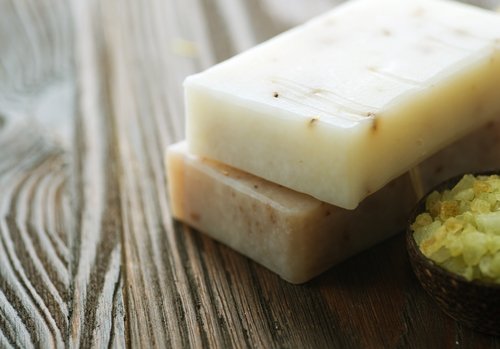Chemicals are a common part of modern life, whether you're a chemist running your own lab or an average citizen washing your hair. Natural and artificial substances have changed the way humans live and defined the modern world in everything from consumer goods to personal care products. One of these products where this transformation is easiest to observe is in soap.
Soap is in many ways a modern substance, helping make procedures like surgery safer than ever before. But it can also trace its roots back thousands of years. While modern soap is created with the help of a variety of chemicals, the first iterations of the cleaning product also used basic chemistry to help people clean themselves and their belongings.
An early history of soap
As the Napa Soap Company explained on its website, the basics of soap creation have never changed. Soap is made when fats or oils combine with an alkali. After these substances react with one another, you're left with soap and glycerin, the sugar alcohol.
The earliest soap makers mixed ash from fires with animal fat. Napa Soap Company explained that some people suspect that soap was initially invented simply by cooking over an open flame and having the fat of the animal drip into the ash below.
The first evidence of soap being made on purpose dates back to Babylonian times, about 2800 B.C., according to Soap History. They mastered the art of creating soap from ash and fat. Evidence of soap or soap-like substances has been found in a variety of subsequent cultures. The Egyptians mixed oils and alkali salts for a cleaning substance, the Romans used urine in their soap, and others used tallow and wood ash. The English word for soap derived from Celtic "saipo" made with plant ash and fat, the news source explained.
Through the 1800s there were still a wide variety of soapy substances being used, Human Touch of Chemistry explained. In Europe, olive oil-based soap became popular and regional soap variations developed. In the U.S., many people made their own soap. Animal fat was combined with lye made from wood ash from the winter and water.
As Augusta University explained, commercial soap in the U.S. didn't evolve until the early 1800s. There were major leaps in soap science during this time period as the demand for soap increased and people began to understand the science behind these products.
Now, most people likely don't think about the soap that they use in their homes. But, as Augusta explained, it's not so different as it used to be.
"Today the soap industry is a thriving enterprise containing many well-known companies such as Proctor and Gamble, Dial, Ivory, Zest, Jergens, and Lever Brothers. What most people probably do not know about the soapmaking industry is that the same methods of production are still employed today as they were in the late 1800s to early 1900s," the university explained.
The chemistry of soap
The basics of soap and its ancient ancestors may be the same, but there have been several important changes in the recent past. As the American Cleaning Institute explained, around World War II American soap manufacturers moved away from the standard batch process of making soap where the fats or oils were boiled all together in a large batch. Instead, they moved to model of continuous processing that allowed for cheaper, faster soap production.
Soap is made through either saponification or neutralization. With saponification, the fat or oil – often cow tallow, sheep tallow, palm oil, or coconut oil – is heated and mixed with the liquid alkali, the ACI explained. Neutralization uses steam to forcibly separate the glycerin and fatty acids of the fat's triglycerides. The mixture is then distilled and mixed with an alkali.
Potassium hydroxide alkalis create liquid soaps, while sodium alkalis, like sodium hydroxide, make hard soaps, like bar. These chemicals can be used to create a wider array of consumer soaps than the early potash solutions made of ash and water that pioneer Americans used.
The key to soap is molecular design of the hydrocarbon tail and hydrophilic head. Soaps are surfactants, which means that they help water become more effective in washing away dirt and oils. Soap helps reduce the surface tension of water so that it can dissolve oils and dirt. The surfactant bonds to water with its head and the oily stain with its tail. Eventually the soap will help the water envelop the dirt or oil and carry it away with agitation.
There are now a variety of synthetic surfactants for everything from body wash to detergent, but the idea behind all types of soap is the same: To separate oil or dirt from the initial substance and wash it away with water.
Many additional chemicals added to soap are designed to give the substance scent, color or texture that enhances the user's experience.




